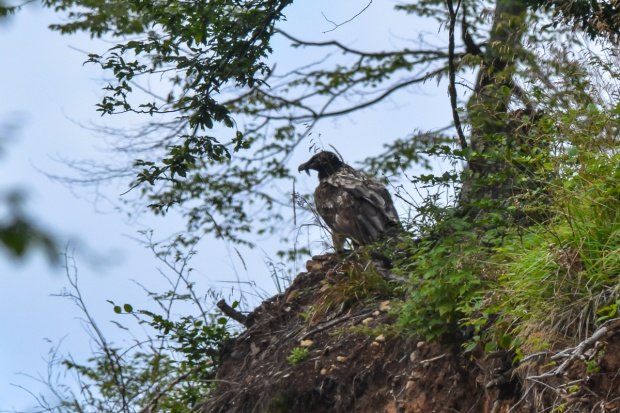The first pictures emerged of Adonis the bearded vulture in Romania, snapped by biologists of the Romanian Ornithological Society (SOR); such a prey bird has no longer been seen in Romania for 83 years, SOR informed in a release this week.
Biologist Sebastian Bugariu and ecologist Cristi Domsa were lucky to spot and photograph the bird.
Adonis was born in 2014 in the Czech Republic, as part of a European breeding program, and was then moved to France's Massif Centrale mountains, where a tracking device was attached to him; the bird also had some feathers bleached as per protocol, to be individually identifiable from far away.
"Since Adonis arrived in Romania, SOR has been in touch with the Swiss coordinator of the project and the counterparts from LPO France, an organization that has a project underway to reintroduce the bearded vulture, Europe's largest bird of prey. Adonis travelled Belgium, Germany, Switzerland, France, Austria, Slovakia, Poland, Belarus, Ukraine and now Romania. The Swiss coordinator contacted SOR when the bird's transmitter came to a standstill, which may have meant it was in trouble," reads the SOR release.
Bugariu and Domsa set off to check on site and spotted the bird near the location indicated by the transmitter. When they moved closer, Adonis took flight and passed overhead several times, so that they could see him well and get detailed photos of him, Sebastian Bugariu reported. The Romanians then called the Swiss coordinator to inform there were no reasons for concern.
Since he entered Romania, Adonis has flown over Transylvania. When he is on the move, Adonis can travel 190 — 200 kilometers a day. His route map can be followed online at: http://rapaces.lpo.fr/gypaete-grands-causses/le-suivi-des-oiseaux#idancre1. According to SOR, the data published on the site has a delay of a few days, depending on how the signals are received from the GPS-GSM transmitter.
According to specialists, bearded vultures (Gypaetus barbatus) are scavengers, feeding almost exclusively on skeletal fragments; they usually wait for other scavengers to pick carcasses clean before getting to the bones that make their diet. The giant bird with a wingspan between 2.3 — 2.8 m usually lives in mountainous areas, typically at altitudes of 500 — 4,000 m, but was also found at elevations as high as 7,500 m in the Himalayas. The bearded vulture disappeared from Romanian fauna in the first part of the twentieth century.








